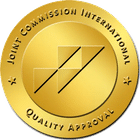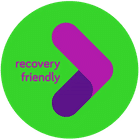Adderall abuse has been on a steady, upward climb in the United States for over a decade. The drug was relatively unknown until the 21st century, which saw an explosion of attention-deficit/hyperactivity disorder (ADHD) diagnoses. Adderall has existed under its current name since 1996 when the FDA allowed the parent company to market it as an ADHD rather than a dieting drug.
Since then, it’s mainly prescribed for children and young adults to improve their concentration and ability to complete tasks. When approved by a doctor at the appropriate doses, the drug can significantly help those struggling with focus and impulsivity. The issue is that Adderall can also be habit-forming and dangerous, prone to abuse in various contexts and for different purposes.
At GateHouse Treatment, we are always on the lookout for new developments and trends in addiction to treat them successfully. With Adderall abuse becoming a nationwide problem, it’s essential to understand the drug, its effects, and its dangers.
1. What is Adderall?
Adderall abuse makes sense when we examine the drug’s chemical makeup. Adderall is a brand name for a combination of amphetamine salts, meaning Adderall is an amphetamine and a stimulant. It’s been called a chemical cousin to methamphetamine (speed), the drug we associate with violent, unpredictable behavior and psychotic symptoms known as “tweaking.” Adderall isn’t as extreme as speed, but it affects the brain similarly, albeit subdued.
Because of these resemblances, Adderall abuse happens in work and party settings. Students and professionals without an ADHD diagnosis take Adderall to complete assignments or when they’ve procrastinated and must stay awake all night and finish their work. The drug is abused in party settings because it causes mild euphoria and a sense of well-being, on top of giving energy.
Repeated uses make the body tolerant to its effects, requiring a higher dose to feel a similar high. Adderall is habit forming, and with repeated uses, the body loses its natural ability to focus and release dopamine (one of the brain chemicals responsible for joy). After a while, the brain will crave Adderall to exist at a base level of functioning.
An addict will do a lot to get their fix. If it was a prescription drug, they might start doctor shopping to see if they can find someone to up their dose. They may lie about their symptoms to try and obtain a prescription. When this fails, they will begin buying from their friends and dealers. Street Adderall is not factory-made and has no quality controls to ensure dosage or purity, making it easy to lace with methamphetamine or the ever-present and dangerous fentanyl. As part of their “One Pill Can Kill” program, the DEA recently claimed that 6 out of 10 fake prescription pills contained a lethal dose of fentanyl.
Since an Adderall addict is not expecting to suffer an opioid death, they will not carry Narcan, used to prevent opioid overdose. But underestimation is not the only way Adderall abuse can turn fatal.
2. Adderall Abuse Symptoms
Adderall abuse begins with taking the pill, which can be ingested orally or crushed and snorted for a more potent effect. Not only does snorting cause damage to the sinuses, but it also increases the chances of an overdose. Since it is an amphetamine, someone on Adderall will seem more lively, talkative, or move faster than expected. Adderall abuse can lead a user to stay up for days. Afterward, there will be a crash, and since the flood of dopamine will have overstimulated the brain, a user coming down will be tired, unattached, cranky, or depressed.
Another less frequent use of Adderall is its original purpose as a dieting drug. Those on Adderall can go for extended amounts of time without feeling hungry and may forget to eat. Adderall abuse can also induce panic attacks and heighten anxiety in those with anxiety disorders.
The severe side effects of Adderall abuse in the long term are:
- High blood pressure
- Decreased sex drive and inability to perform
- Insomnia
- Cardiac death
- Stroke
- Constipation
- Kidney Failure
- Seizures
- Headache
- Psychosis
- Muscle tissue breakdown
- Overdose
3. Adderall Abuse Overdose
The signs of an impending Adderall abuse overdose are readily apparent. These include extreme aggression, shakiness, blurred vision, fast breathing, an irregular heartbeat, fever, nausea, and vomiting. The user will then collapse into seizures and possibly a heart attack.
Unlike opioid overdoses, there is no drug treatment solution for an Adderall abuse overdose. Adderall overdoses can only be managed by addressing the underlying symptoms and stabilizing the patient. If someone in your life is overdosing from Adderall abuse, please get in touch with medical professionals on the spot. You may save their life!
4. Adderall Abuse and Mixing Drugs
Users like to take Adderall with Xanax, a benzodiazepine prescribed to treat anxiety. Since Adderall abuse speeds up the Central Nervous System and Xanax slows it down, people take Xanax to come down from an Adderall high and get sleep or avoid panic attacks. However, Xanax does not fight the withdrawal side effects of Adderall and comes with different side effects that can have a cumulative effect with those of the amphetamine.
When used at parties, people combine Adderall with alcohol. Adderall is a stimulant, and alcohol is a depressant, meaning that they have a balancing effect on each other. Although this sounds like a positive, it’s incredibly hazardous. Adderall will stop the user from feeling too drunk, and alcohol will stop the user from feeling too high. What happens is a mutual dulling of the body’s way of alerting that something is wrong.
People know when to stop drinking because they start to feel ill. When on Adderall, users will feel less drunk than they are. They will be able to take drink after drink without feeling the expected physiological downsides of binge drinking. This dangerous combination reduces inhibitions to nothing, leads to partaking in much riskier activities, and potentially results in fatal alcohol poisoning.
Adderall can seem harmless, mainly since it’s a prescription drug for kids, but it requires a supervised routine overseen by medical professionals. Otherwise, it can have catastrophic effects on health and overall brain function.
GateHouse Treatment and Adderall Abuse
No matter how bad your addiction is, we are here to help. Our team of experts will treat you with the dignity befitting a human being and not just a set of symptoms. We offer outpatient, advanced outpatient, partial hospitalization programs, and other innovative forms of therapy. We work with quality sober homes to provide the best recovery environment.
Call (855) 448-3588 to speak about your wellness, or contact us through our website for a free consultation. We are available seven days a week, 24 hours a day, ready to aid you on your path to sobriety.
- Cymbalta Withdrawal: Causes, Symptoms, And Management - October 12, 2023
- Boredom in Recovery: 5 Tips to Avoid Relapse - October 6, 2023
- Overconfidence and Rehab: Avoiding Relapse - October 4, 2023




